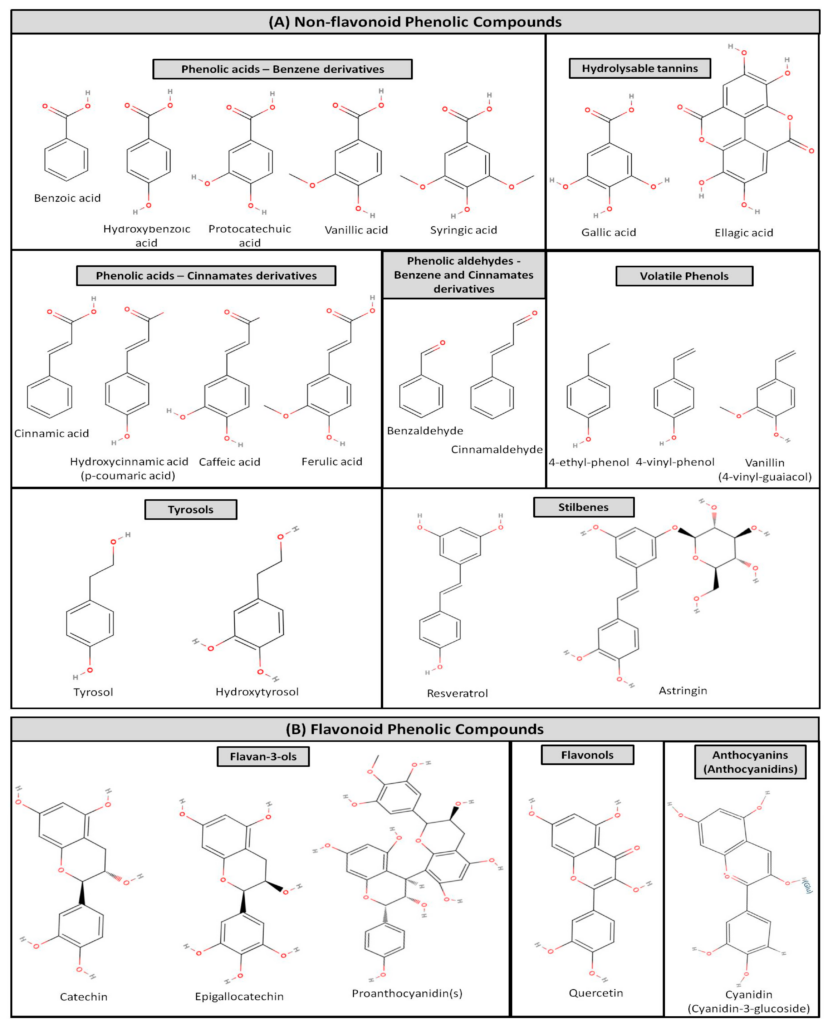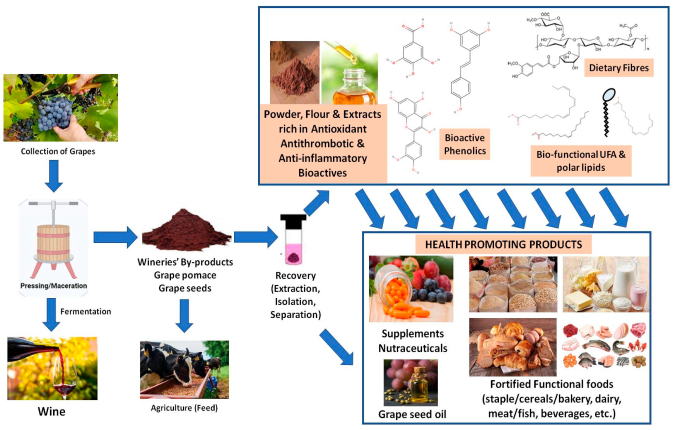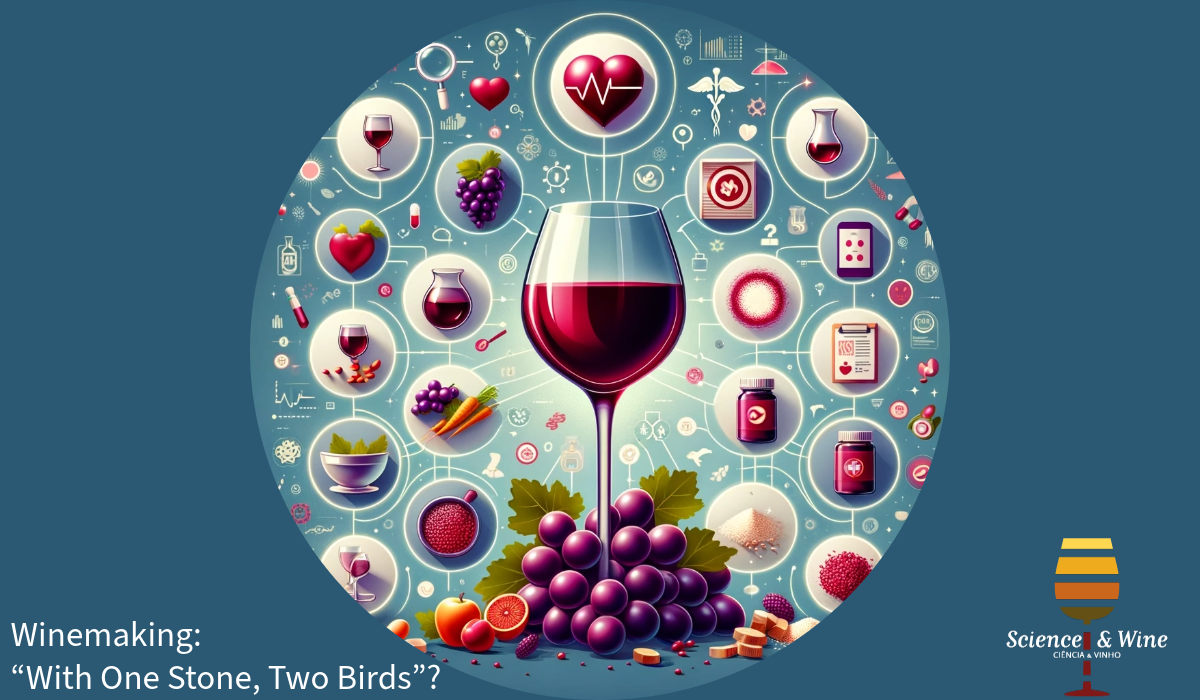The paper titled “Winemaking: ‘With One Stone Two Birds’? A Holistic Review of the Bio-Functional Compounds, Applications, and Health Benefits of Wine and Wineries’ By-Products” provides a comprehensive examination of the health benefits and applications of wine and its by-products. The focus is on the bio-functional compounds found in wine, particularly those with antioxidant, anti-inflammatory, and antithrombotic properties, and their role in promoting health when consumed in moderation.
1. Introduction and Overview
Wine, a product of one of the oldest fermentation processes, plays a significant role in human culture, especially in the Mediterranean region. Its production has evolved from a traditional craft to an industrial process, creating various types of alcoholic beverages. This paper outlines the significance of wine’s bio-functional compounds, which are gaining attention in the functional food sector due to their health-promoting properties. It also focuses on the valorization of wineries’ by-products, such as grape pomace and grape seeds, which are rich in valuable bioactive compounds.
2. Composition and Nutritional Value of Wine
Wine is a unique alcoholic beverage because of its rich content of phenolic compounds. These compounds vary depending on several factors, including grape variety, geographic location, soil conditions, weather, and winemaking process. Phenolic compounds such as resveratrol, phenolic acids, anthocyanins, flavonoids, and their microbiota-derived metabolites are notable for their antioxidant, anti-inflammatory, antiplatelet aggregation, and antiatherogenic activities. Wine also contains bioactive lipid compounds, such as unsaturated fatty acids, which contribute to its health-promoting attributes.

Figure . The structures of the most characteristic non-flavonoid (A) and flavonoid (B) phenolic compounds present in wine and/or grape pomace. Structures were obtained from https://molview.org/ (accessed on 24 April 2023).
3. Health Benefits of Moderate Wine Consumption
Moderate wine consumption is associated with several health benefits. Epidemiological studies and targeted trials have demonstrated that moderate wine consumption can lead to reduced endothelial dysfunction and low-grade inflammation, which are crucial for preventing inflammation-related chronic disorders such as atherosclerosis, cardiovascular diseases, diabetes, and cancer. This paper emphasises the importance of moderate consumption, defined as up to 1-2 glasses per day for men and 0.5-1 glass per day for women, primarily with meals. However, the paper also warns against excessive wine consumption due to potential adverse health effects such as liver cirrhosis, various types of cancer, and an increased risk of cardiovascular diseases.
4. Wineries’ By-Products and Their Valorization
The winemaking process generates significant amounts of by-products, particularly grape pomace and seeds. These by-products are rich in dietary fibre, lipid bioactives, phenolics, and natural antioxidants. They are traditionally undervalued and are used mainly as animal feed or fertilisers. However, their high content of valuable compounds offers the potential for use in functional foods, supplements, and nutraceuticals. This paper highlights the trend towards sustainable and economically viable upcycling of these by-products, emphasising their health benefits and role in promoting agricultural sustainability.

Figure . Applications of wineries’ by-products and their bioactives in the food industry, as ingredient(s) for the fortification/production of existing/novel functional food products, supplements and nutraceuticals with increased antioxidant protection, shelf life and antithrombotic and anti-inflammatory health-promoting properties against chronic disorders.
5. Phenolic Bioactives in Wine and Wineries’ By-Products
Phenolic compounds in wine and its by-products are primarily classified as flavonoids and nonflavonoids. The antioxidant, anti-inflammatory, and antithrombotic properties of these compounds have been extensively studied. This paper discusses the pleiotropic effects of these compounds, such as reducing pro-inflammatory markers and preventing chronic disorders, such as cardiovascular diseases. This study also explores the different interactions of wine flavonoids with key biological targets, their role in disease prevention, and their contribution to the health benefits associated with wine consumption.
6. Resveratrol and Its Health Benefits
Resveratrol, a prominent non-flavonoid phenolic compound found in wine, possesses antioxidant and anti-inflammatory properties. It can decrease oxidative stress and lipid peroxidation, reduce circulating LDL-cholesterol levels, and reduce the risk of cardiovascular disease. This paper discusses the multifaceted actions of resveratrol, including its role in modulating various signalling pathways and molecular functions, as well as its potential as a natural-origin drug for various disorders. However, it also acknowledges the challenges related to low bioavailability and rapid excretion of resveratrol.
7. Bioactive Lipid Compounds in Wine and Wineries’ By-Products
Wine and its byproducts contain functional lipid bioactives, including various phospholipids and glycolipids. These lipids undergo modifications during fermentation, resulting in the production of bioactive compounds with anti-inflammatory, antithrombotic, and antiatherogenic properties. This study discusses the composition of these bioactive lipids and their contribution to cardiovascular health, highlighting their potential as functional ingredients in the food industry.
8. Limitations and Future Perspectives
This study identified several limitations in the study of phenolic compounds, including their bioavailability, metabolic absorption, and pharmacokinetic profiles. It emphasizes the need for more in vivo studies focused.
In summary, this study provides a holistic view of the bio-functional compounds in wine and winery by-products, their health benefits, and applications, while also addressing the limitations and future research directions in this field.
Read all at: Tsoupras, A.; Ni, V.L.J.; O’Mahony, É.; Karali, M. Winemaking: “With One Stone, Two Birds”? A Holistic Review of the Bio-Functional Compounds, Applications and Health Benefits of Wine and Wineries’ By-Products. Fermentation 2023, 9, 838. https://doi.org/10.3390/fermentation9090838

